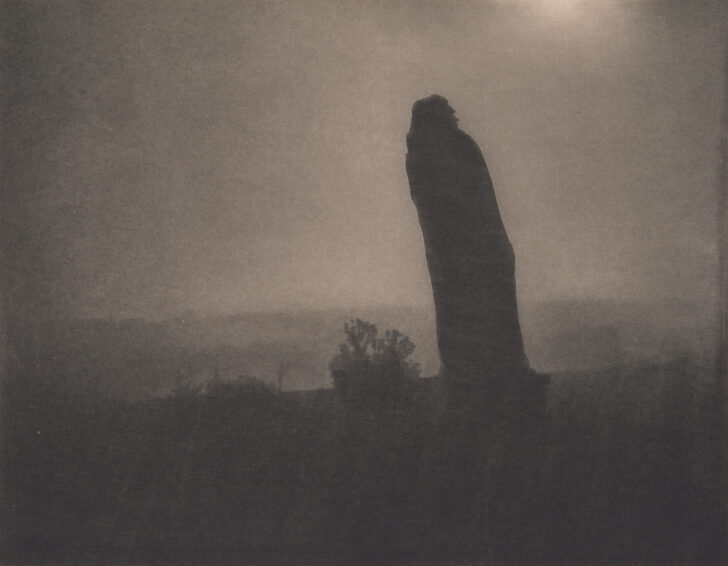Balzac, The Silhouette, 4 a.m.
Alfred Stieglitz; Edward Steichen

Description
Gallery Rotation Spring/Summer 2011
Edward Jean Steichen
United States, born Luxembourg, 1879–1973
Balzac, The Silhouette—4 A.M.
Negative 1908; photogravure 1911
Photogravure
Museum purchase made possible by the Sarah and Otto Graf Endowment and the Friends of the Museum of Art, 2006/1.155
In 1908, Edward Steichen received an invitation from Auguste Rodin (1840–1917) to photograph his controversial sculpture of the French writer Honoré de Balzac (1799–1850). Rodin’s plaster model for a monument to this celebrated author had been rejected by the society that commissioned it and ridiculed in the press when it was exhibited at the Salon of 1898. After returning the money for the commission, Rodin moved the sculpture to his studio, where it remained covered. Ten years after the scandal he still hoped the Balzac might be understood by its critics and that Steichen, whose work he admired, could help to achieve this.
Rodin recommended that the plaster sculpture be photographed at night in moonlight and Steichen agreed. Photographing in the dark requires leaving the film exposed for long periods and Steichen experimented with times that ranged from fifteen minutes to an hour. Of the resulting images, this is one of three that Steichen thought the most successful. When Rodin finally saw a set of the prints a week or two later he said, “You will make the world understand my Balzac through these pictures. They are like Christ walking in the desert.”
Subject Matter:
Edward Steichen's photographs of Balzac's sculpture transform a static figure into a ghostly silhouette emerging from a hazy landscape. The images are evocative and brooding. Rodin had been commissioned for his statue of Balzac by the Société des Gens de Lettres in 1891; however, in 1898, the group refused it. Ten years later Rodin invited Steichen to photograph the sculpture in hopes of realizing his vision for the sculpture. After Steichen noted that the plaster statue appeared harsh and chalky in the daylight, Rodin moved the sculpture out of the studio and into the open air set on a rotating platform in the garden. Steichen spent two nights, from sunset to sunrise photographing by the light of the moon. He moved around the sculpture to find the best angle and moved his camera according to the trajectory of the moon. Exposures lasted up to an hour each. Rodin responded to the photographs, “You will make the world understand my Balzac through these pictures. They are like Christ walking in the desert.” The photographs were exhibited in the Photo-Secession Gallery in 1909, Steichen’s last show with Stieglitz, and then three were published in Camera Work in 1911. In 1939, the statue was cast in bronze and placed in the streets of Paris.
Physical Description:
This photogravure is one of a series of photographs by Edward Steichen commissioned by Auguste Rodin of his statue of the French writer Honoré de Balzac. Created at 4:00 a.m., a cloaked and silhouetted figure stands in a misty landscape.
Usage Rights:
If you are interested in using an image for a publication, please visit https://umma.umich.edu/request-image/ for more information and to fill out the online Image Rights and Reproductions Request Form.